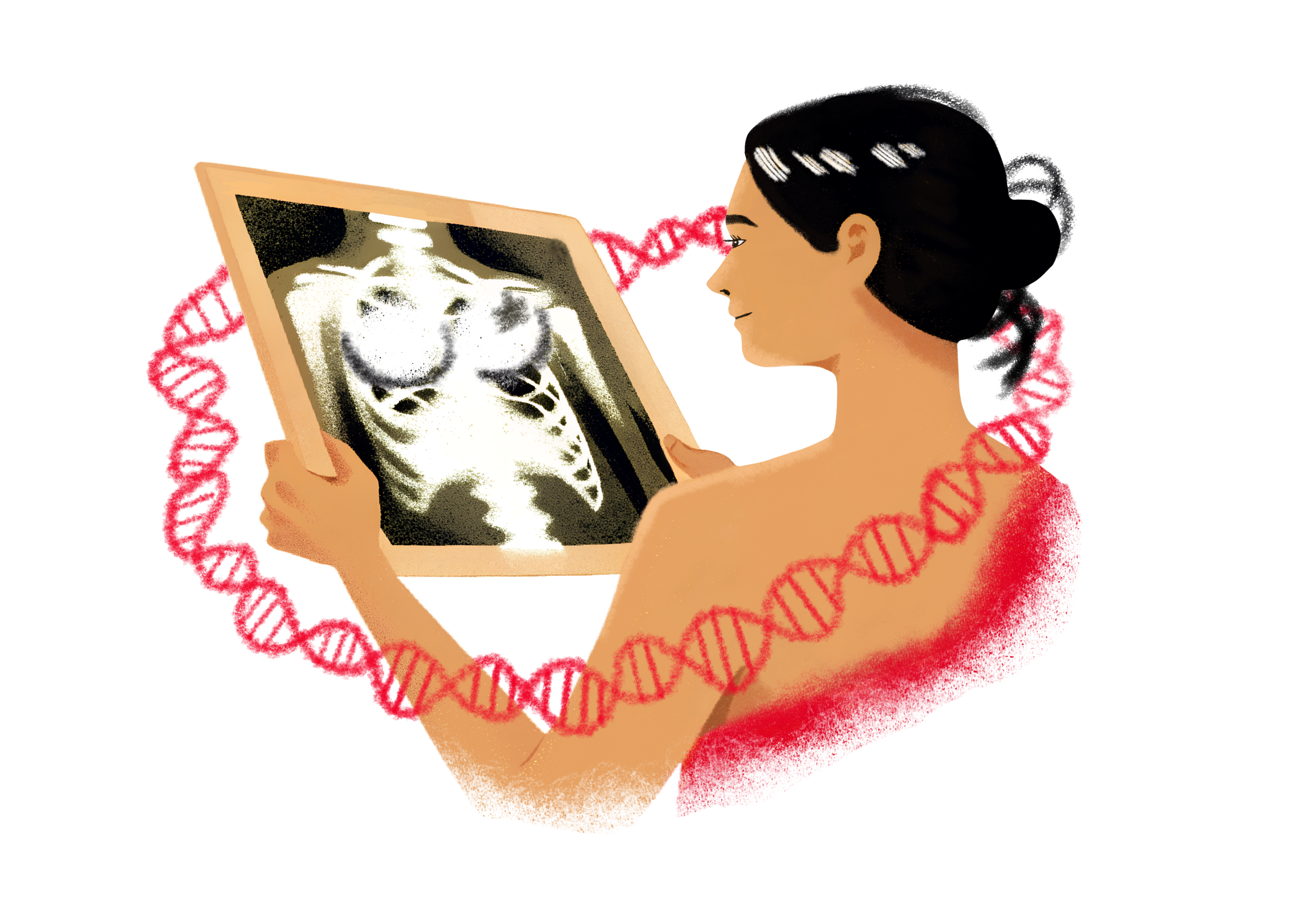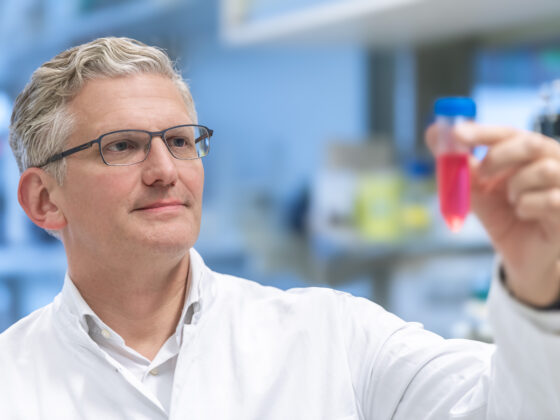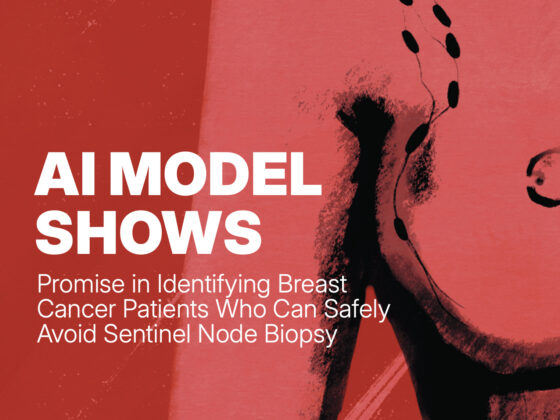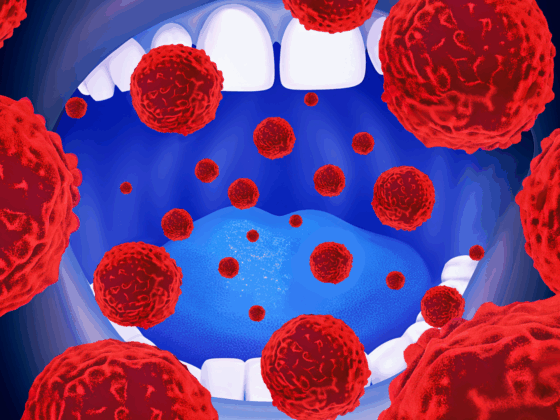Breast cancer survivors who carry BRCA1 or BRCA2 mutations and received textured implants are 16 times more likely to develop breast implant-associated anaplastic large cell lymphoma (BIA-ALCL) than those who have implants but do not carry these mutations.
The study, published in Blood Advances on June 12, underscores the need for women to inform health care staff about their personal medical history of mastectomy and implants, long after surviving breast cancer.
“Our findings show that BRCA1 and BRCA2 mutations are a significant risk factor for developing this type of lymphoma, confirming earlier suggestions of a possible role. It’s possible that implant-associated lymphoma is yet another cancer that can arise because of these genetic mutations,” says lead researcher Paola Ghione, from Memorial Sloan Kettering Cancer Center (MSKCC), New York, to CancerWorld.
To the authors’ knowledge, she adds, the study represents the first to prospectively monitor a cohort where women with implants followed long-term were assessed for germline mutations in relation to risk of developing BIA-ALCL.
Breast implant-associated anaplastic large cell lymphoma (BIA-ALCL) is a type of T-cell lymphoma arising near breast implants, either as a fluid collection or as a mass. Studies have uncovered potential links between textured implants and the development of BIA-ALCL, leading to their recall from Europe and the US in 2019. In their most recent update on the issue in 2023, the FDA reported a total of 1,380 BIA-ALCL cases world-wide and 64 deaths attributable to BIA-ALCL.
The suspicion of BRCA1/BRCA2 germline mutations as a risk factor for BIA-ALCL came from a study by the Netherlands Cancer Institute, published in Blood in 2020, showing that 26.7% of patients with BIA-ALCL had BRCA1/BRCA2 germline pathogenic variants compared to 0.5% of the general Dutch population. In the current study, Ghione and colleagues sought to determine if carriership of BRCA germline mutations represents a risk factor for developing BIA-ALCL in women with textured surface implants.
The study followed a cohort of over 3,000 women from Memorial Sloan Kettering Cancer Center who received breast implants as part of their cancer treatment, with a median follow-up of 11.5 years to assess complications. Within the group, 520 women were tested for BRCA genes.
Results revealed that of the 520 women with breast cancer tested for BRCA, 8.3% (n=43) were found to carry BRACA1 or BRCA2 mutations. During a median follow-up of 138 months, seven patients developed BIA-ALCL.
Comparison of patients with and without BRCA pathogenic variants showed that the risk of developing BIA-ALCL was 16 times higher in patients with germline BRCA mutations (95% CI 3.6-76.1, P<0.0003).
In a case-control study where 13 patients with BIA-ALCL (including six taken from outside the 520 patient cohort) were matched with 39 controls (breast implants but no BIA-ALCL), the research team found that 38.5% of patients with BIA-ALCL had BRCA pathogenic variants versus 7.8% of controls.
For the first time, the team evaluated multiple possible confounders of the relationship between BRCA1/2 and the development of lymphoma. Results showed that none of the other interrogated variables, including type of implant filling (saline or silicone), age at breast cancer surgery, and prior cancer treatments (radiation or chemotherapy), were associated with the development of BIA-ALCL.
“If we look at the absolute numbers [seen in this study], it’s still fairly rare, but the important thing to note is that when we look at women with this genetic predisposition, there is a big jump in the percentage with this lymphoma,” says Ghione.
Speculating on the likely link between BRCA1/BRCA2 mutations and BIA-ALCL, the authors write, “The proteins encoded by the BRCA1/2 genes are involved in DNA repair mechanisms: their mutations lead to chromosome instability and accumulation of more mutations, raising the hypothesis that BRCA1/2 could also be involved in this type of lymphomagenesis.”
While implants used now are theoretically safe, since breast implants are generally changed every 10 to 15 years the authors estimate that between two and five million women worldwide still have textured implants in their bodies.
“So, it’s important that women know what implants they have and talk with their doctor and remember to report this surgery as part of their medical history,” says Ghione. Women, she adds, should ask about genetic testing for BRCA1 or 2, if they were diagnosed or have family members diagnosed with breast cancer at younger ages.
The researchers plan to continue following up with the study patients, including those who have had their textured implants removed.
CancerWorld Comment
These findings not only shed light on the genetic predisposition to developing BIA-ALCL, but also emphasise the importance of patient education and early intervention. Women with a history of breast cancer and BRCA mutations need to be aware of the risks associated with textured implants, and healthcare providers should ensure that implant history and genetic testing are part of routine medical discussions. Policymakers must prioritise continued research into the links between genetic mutations and implant-associated lymphomas, while also creating guidelines to ensure better patient care and informed decision-making.












